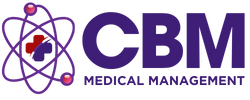Understanding Remote Patient Monitoring: Benefits and Challenges
In an era where healthcare is perpetually evolving, Remote Patient Monitoring (RPM) has emerged as a beacon of innovation, transforming the way care is delivered. Backed by CBM Medical Management‘s 40 years of experience in Revenue cycle management and Practice start-up, this insightful exploration dives into the essence of RPM, guiding mental health providers on their journey to build a lucrative practice. Let’s explore the multifaceted landscape of RPM, delineating its benefits and surmounting its challenges together.
The Benefits of Remote Patient Monitoring
Imagine a world where healthcare transcends traditional boundaries, offering a blend of convenience and efficacy. RPM presents such a world. At its core, RPM is about staying connected with patients outside conventional clinical settings, using digital technologies to monitor health data in real time. Here’s how it can transform patient care:
- Improved Patient Outcomes: Continuous monitoring can lead to early detection of potential health issues, enabling proactive interventions and reducing the need for emergency care.
- Enhanced Access to Care: Patients in remote areas can receive the same level of monitoring as those in urban centers, breaking down geographical barriers to quality healthcare.
- Increased Patient Engagement: By empowering patients to take an active role in their health, RPM fosters a sense of accountability and encourages adherence to treatment plans.
- Cost Efficiency: By reducing hospital readmissions and enabling early intervention, RPM can significantly lower healthcare costs for both providers and patients.
The Challenges of Implementing RPM
While RPM heralds a new dawn for patient care, it is not without its hurdles. Understanding these challenges is the first step towards creating effective solutions:
- Technology Integration: Integrating RPM technologies with existing healthcare systems can be complex, requiring significant upfront investment and technical expertise.
- Data Security and Privacy: The transmission and storage of sensitive patient data necessitate robust security measures to prevent breaches and protect patient privacy.
- Patient Technology Literacy: The effectiveness of RPM depends on patients’ ability to use the technology correctly, which can be challenging for some populations.
- Regulatory Compliance: Navigating the regulatory landscape of RPM can be daunting, with providers needing to ensure that protocols comply with healthcare laws and standards.
A Partner in Your Practice’s Growth
Despite these challenges, the potential of RPM to revolutionize patient care is undeniable. The key to leveraging its benefits while overcoming obstacles lies in having the right guidance and support. This is where CBM Medical Management shines, offering expertise in navigating the complexities of healthcare management, including the adoption of RPM. For those looking to enhance their practice with RPM, exploring our virtual assistant services can provide the additional support needed to manage patient care and administrative tasks efficiently.
In conclusion, Remote Patient Monitoring represents a pivotal shift in healthcare delivery, offering a path to improved patient outcomes, greater access to care, and enhanced operational efficiency. By understanding and addressing its challenges head-on, healthcare providers can fully embrace the benefits of RPM, ensuring a brighter, healthier future for all.

